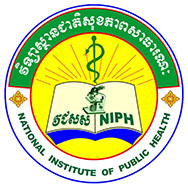Background: Cambodia has seen an increase in the prevalence of type 2 diabetes (T2D) over the last 10 years. Three main care initiatives for T2D are being scaled up in the public health care system across the country: hospital-based care, health center–based care, and community-based care. To date, no empirical study has systematically assessed the performance of these care initiatives across the T2D care continuum in Cambodia.
Objective: This study aimed to assess the performance of the 3 care initiatives—individually or in coexistence—and determine the factors associated with the failure to diagnose T2D in Cambodia.
Methods: We used a cascade-of-care framework to assess the T2D care continuum. The cascades were generated using primary data from a cross-sectional population-based survey conducted in 2020 with 5072 individuals aged ≥40 years. The survey was conducted in 5 operational districts (ODs) selected based on the availability of the care initiatives. Multiple logistic regression analysis was used to identify the factors associated with the failure to diagnose T2D. The significance level of P<.05 was used as a cutoff point.
Results: Of the 5072 individuals, 560 (11.04%) met the definition of a T2D diagnosis (fasting blood glucose level ≥126 mg/dL and glycated hemoglobin level ≥6.5%). Using the 560 individuals as the fixed denominator, the cascade displayed substantial drops at the testing and control stages. Only 63% (353/560) of the participants had ever tested their blood glucose level in the last 3 years, and only 10.7% (60/560) achieved blood glucose level control with the cutoff point of glycated hemoglobin level <8%. The OD hosting the coexistence of care displayed the worst cascade across all bars, whereas the OD with hospital-based care had the best cascade among the 5 ODs. Being aged 40 to 49 years, male, and in the poorest category of the wealth quintile were factors associated with the undiagnosed status.
Conclusions: The unmet needs for T2D care in Cambodia were large, particularly in the testing and control stages, indicating the need to substantially improve early detection and management of T2D in the country. Rapid scale-up of T2D care components at public health facilities to increase the chances of the population with T2D of being tested, diagnosed, retained in care, and treated, as well as of achieving blood glucose level control, is vital in the health system. Specific population groups susceptible to being undiagnosed should be especially targeted for screening through active community outreach activities. Future research should incorporate digital health interventions to evaluate the effectiveness of the T2D care initiatives longitudinally with more diverse population groups from various settings based on routine data vital for integrated care.
